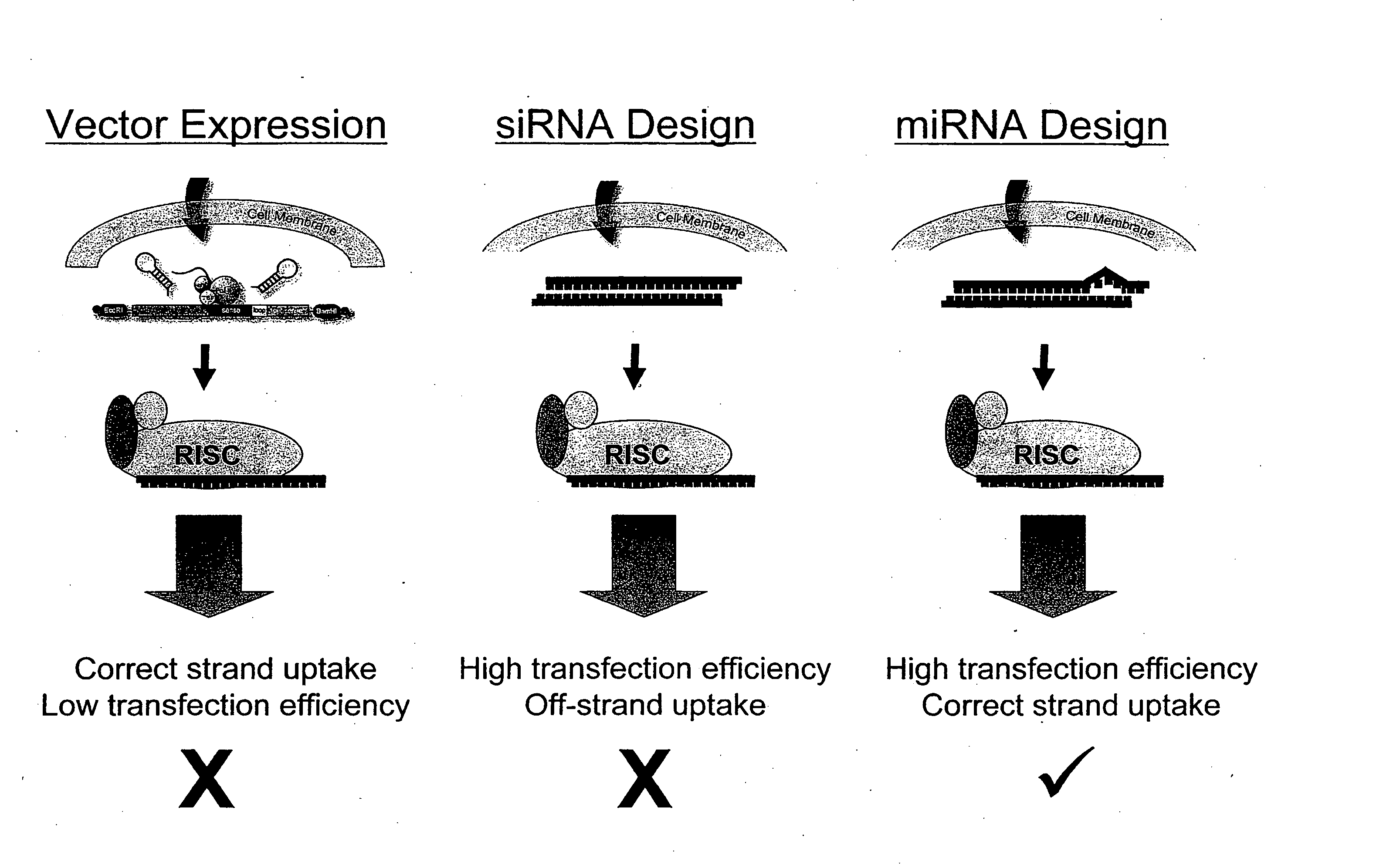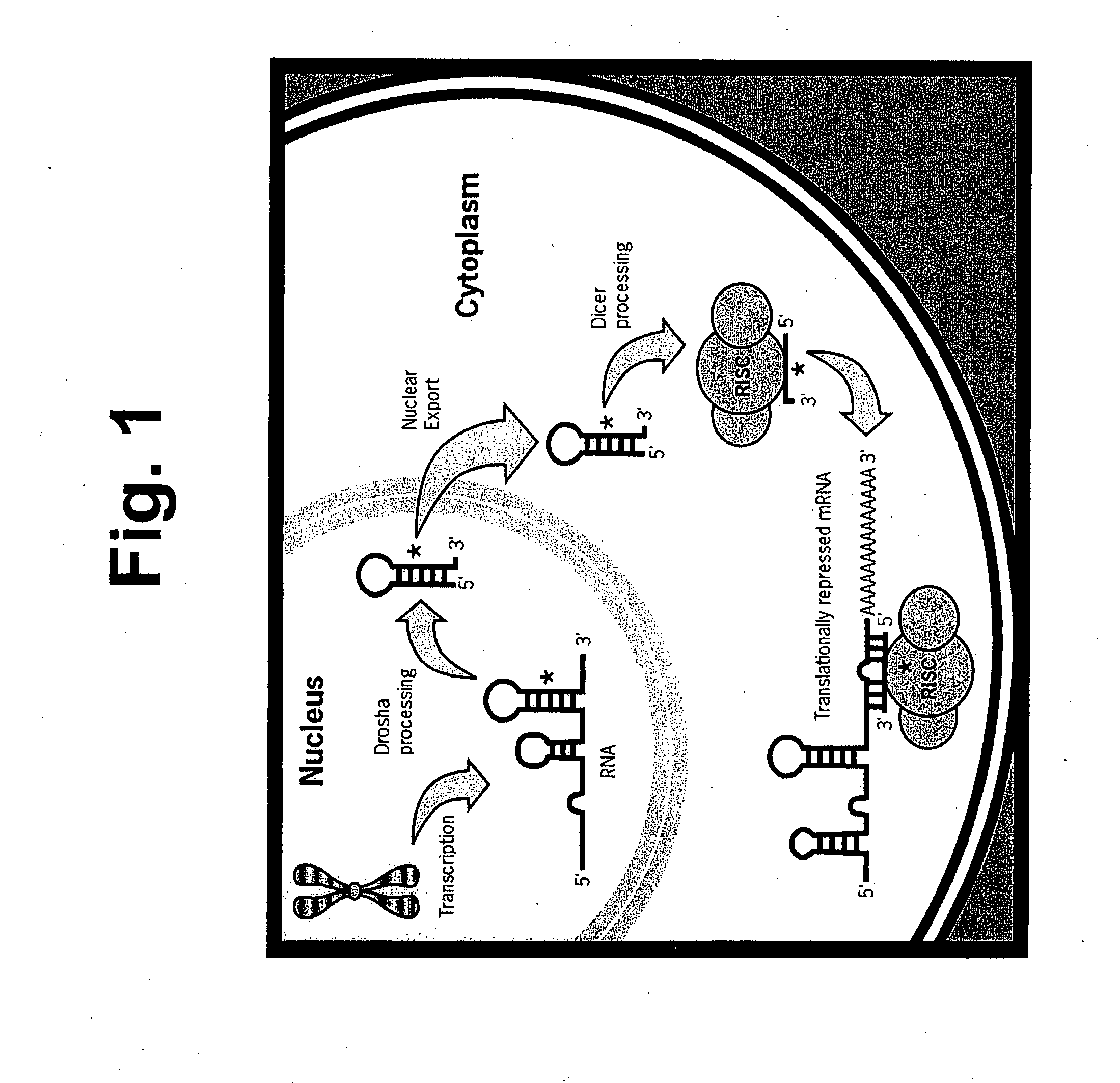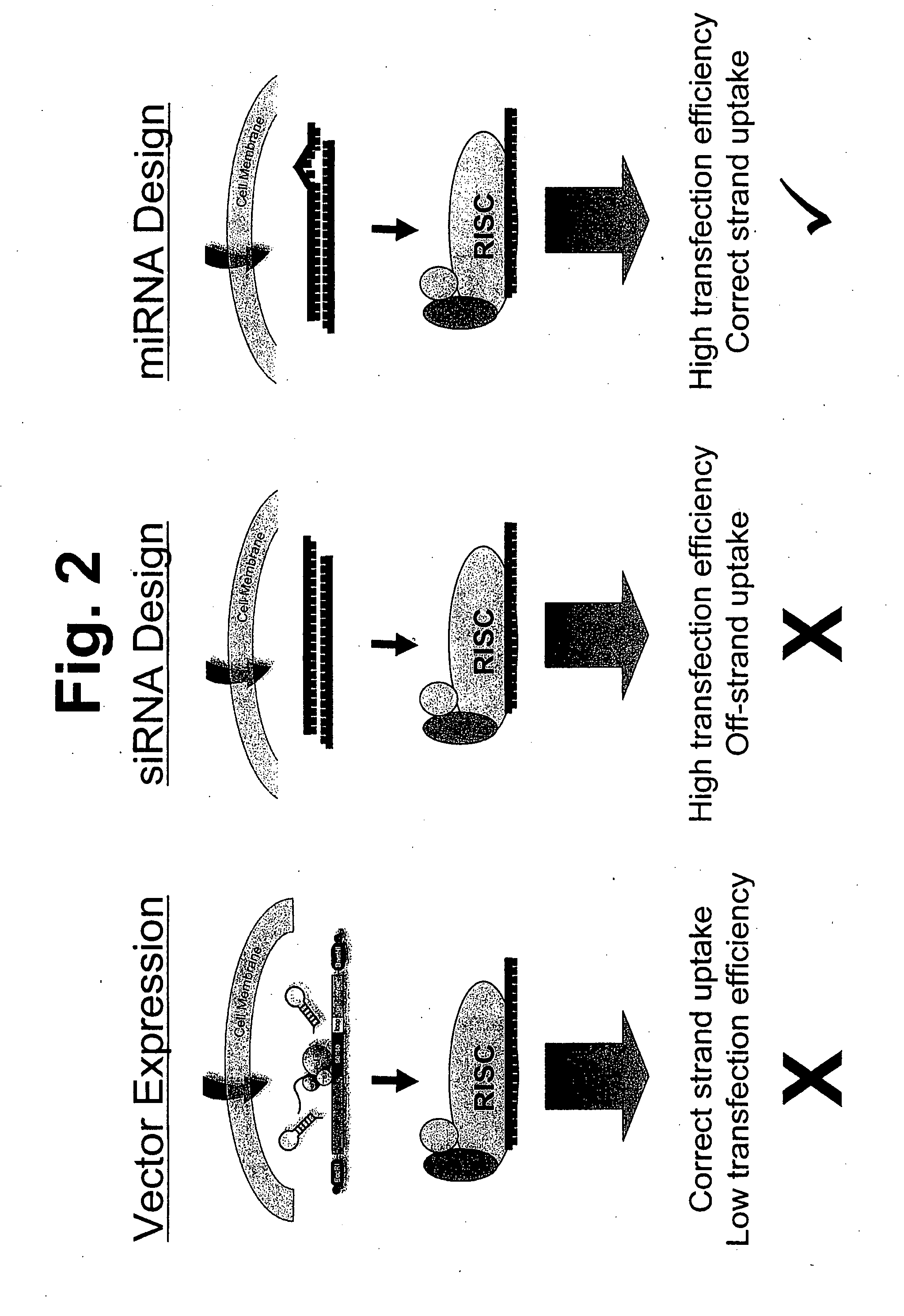Methods and compositions involving mirna and mirna inhibitor molecules
a technology of inhibitor molecules and compositions, applied in the field of molecular biology, can solve the problem of low transfection efficiency of plasmids
- Summary
- Abstract
- Description
- Claims
- Application Information
AI Technical Summary
Benefits of technology
Problems solved by technology
Method used
Image
Examples
Embodiment Construction
[0141] The present invention is directed to compositions and methods relating to preparation and characterization of miRNAs, as well as use of miRNAs for therapeutic, prognostic, and diagnostic applications. To overcome the problem with previous inefficient plasmid-based systems for introducing miRNA into cells, the inventors developed small, partially double-stranded RNAs that can be delivered with high efficiency to both immortalized and primary cells. The small RNAs have the same functional activities as endogenously expressed miRNAs. Because the small RNAs can be delivered to cells with much higher efficiency than can plasmids, they induce a much stronger phenotype that is easier to detect and quantify, making it possible to identify many of the functions of miRNAs in cells.
[0142] The inventors have also created a library of the small, double-stranded RNA molecules that can be used to introduce miRNAs into cells, as well as a library of antisense molecules that inhibit the acti...
PUM
| Property | Measurement | Unit |
|---|---|---|
| length | aaaaa | aaaaa |
| structures | aaaaa | aaaaa |
| nucleic acid | aaaaa | aaaaa |
Abstract
Description
Claims
Application Information
 Login to View More
Login to View More - R&D
- Intellectual Property
- Life Sciences
- Materials
- Tech Scout
- Unparalleled Data Quality
- Higher Quality Content
- 60% Fewer Hallucinations
Browse by: Latest US Patents, China's latest patents, Technical Efficacy Thesaurus, Application Domain, Technology Topic, Popular Technical Reports.
© 2025 PatSnap. All rights reserved.Legal|Privacy policy|Modern Slavery Act Transparency Statement|Sitemap|About US| Contact US: help@patsnap.com



